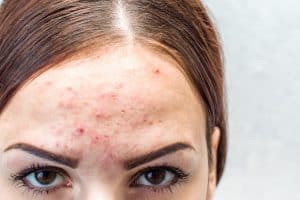Folliculitis may seem like a bouncer that went over your head. Though, you’d be surprised to know that it’s relatively common and can happen to anyone. There’s no need for guesswork as we’ll straight away get into the details to understand what is folliculitis, its types, symptoms and things you can do to prevent them.
Ever Heard of These Names?
Different kinds of folliculitis have other names, too, which you may have come across.
- Razor Bumps
- Shaving Rash
- Barber’s itch
- Hot Tub Rash
What Do You Mean by Folliculitis?
It is a form of skin infection or problem that affects one or more hair follicles. Follicles are small pockets or openings where each hair grows. Hair follicles appear everywhere except at the soles of your feet, palms and lips. Mainly, you may experience mild symptoms most probably disappear in a few days. However, some severe cases may require you to consult a doctor.
Areas Where You May Find Folliculitis
- Neck
- Face
- Scalp
- Thighs
- Buttocks
- Armpits
What are Some of the Causes of Folliculitis?
Folliculitis occurs due to infection caused by certain bacteria such as staph or even fungi. Staph is usually present on your skin and doesn’t cause any issue. However, if it gets into your body through maybe a cut or any other way, it can create problems. Though, other things can cause it too, which are as follows.
- Hair removals such as waxing and shaving
- Have an illness such as leukaemia, HIV or diabetes that affects your immune system
- If you have acne or dermatitis
- Blockages due to oil present in skincare products
- Wearing tight clothes, boots or rubber gloves
- Using a swimming pool or a hot tub that isn’t clean.
What are the Different Types of Folliculitis?
There are two types of folliculitis: Deep Folliculitis and Superficial Folliculitis
Types of Deep Folliculitis
Boils
When a hair follicle gets deeply infected by staph, it can cause boils. You may notice pink or red bumps that can be painful too.
Sycosis barbae
It occurs because of shaving and appears as pus-filled red bumps. In some cases, it may also cause scarring.
Eosinophilic folliculitis
The most typical places where you can find it are the neck, shoulders, forehead and upper arms. Generally, it affects babies and people with low immunity due to certain conditions. This folliculitis appears as pus-filled itchy bumps.
Gram-negative folliculitis
It happens to someone who has been taking antibiotics to treat acne for a long time. By consuming medications for an extended period, the bacteria become resistant to the antibiotics and worsen your acne.
Types of Superficial Folliculitis
Bacterial folliculitis
You can get this folliculitis if you cut yourself, and bacteria (usually it’s staph) receives access to get inside your body/skin. It appears as a pus-filled white itchy bump.
Hot tub folliculitis (pseudomonas folliculitis)
When you get into a hot tub or swimming pool where chlorine levels or pH are imbalanced, it happens. You may notice round, itchy red bumps.
Razor bumps (pseudofolliculitis barbae)
It occurs after waxing or shaving. Dark bumps appear on your face, groin area or neck.
Pityrosporum folliculitis
It happens due to a yeast infection and appears as red itchy bumps on areas like your back, shoulders, upper arms, face and neck.
How Can You Prevent Folliculitis?
Keep the given below points in your mind to prevent folliculitis:
- Shave in the direction of hair growth.
- Wear clothes that aren’t tight-fitting to decrease friction between your skin and clothes.
- Use skincare products that don’t clog your pores and are light on your skin.
- Do not skip taking a shower after sweating.
- Never share your personal care products with others like towels and razors.
- Regularly wash your washcloths and towels to avoid any infection.
- Be cautious while using hot tubs and swimming pools. They need to be clean and have an accurate chlorine balance.
Summing Up
Any acne breakout or bumps on your skin doesn’t have to be folliculitis. Mostly, folliculitis vanishes within a few days if taken care of properly. However, not all cases are mild ones. Some could be serious as well and would require medical treatment. Talk to a dermatologist to clarify if it’s folliculitis or not, and based on your condition, she/he will suggest proper treatment and medications.
FAQs
- How long does it take for folliculitis to heal?
It would depend on the type and severity of the infection. Mild folliculitis usually goes away by itself in a few days. Severe ones may take a few weeks if treated optimally.
- What may happen if folliculitis is left untreated?
It is never advisable to leave folliculitis untreated, especially if you are unaware of the cause. It is best to observe the bumps for a few days and get them treated by a dermatologist if you see no improvement or the situation worsens. Leaving it without treatment may cause systemic infection and other complications.
- Can folliculitis go away permanently?
When treated correctly, yes, folliculitis will go away. However, you need to practise preventive measures to avoid relapse.




